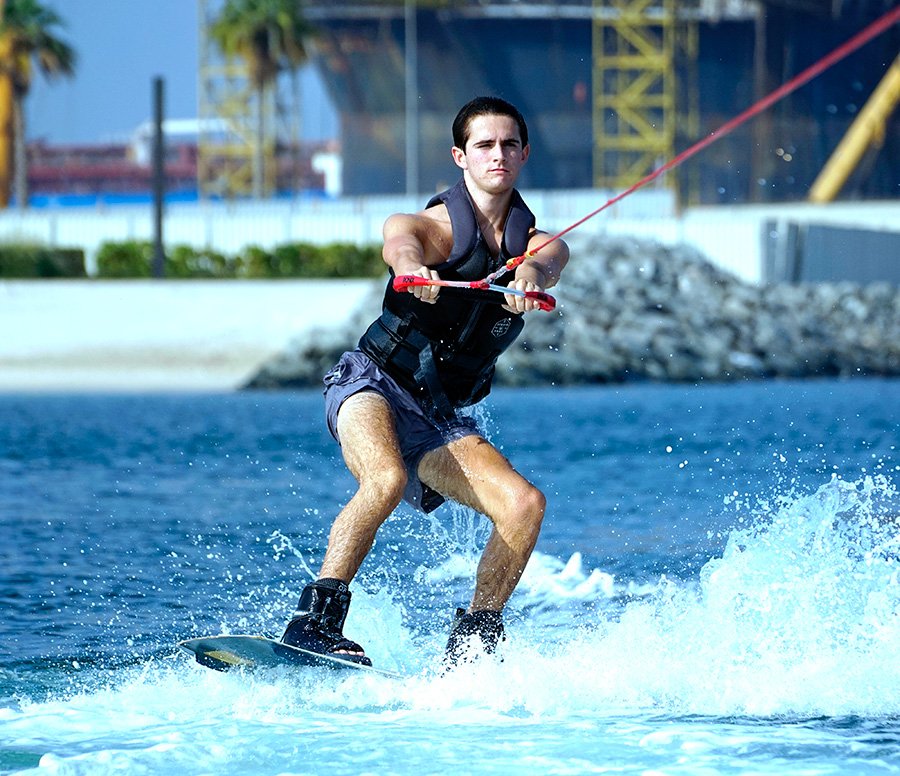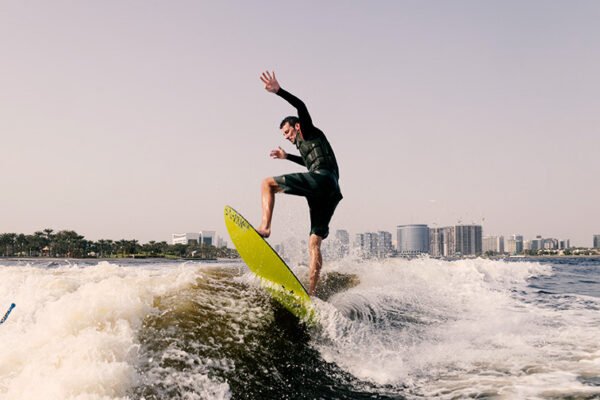
How to Start Wakeboarding: A Beginner’s Guide
Wakeboarding is an exhilarating water sport that combines elements of surfing, snowboarding, and water skiing. It’s a thrilling way to enjoy the water, whether you’re on a lake, river, or the open sea. If you’re new to wakeboarding, you might feel a bit overwhelmed by the equipment, techniques, and skills needed to get started. Don’t worry—this guide will walk you through the basics of how to start wakeboarding, helping you build a solid foundation for this exciting sport.
1. Understanding the Basics of Wakeboarding
Wakeboarding involves riding a board over the surface of the water while being towed by a boat or a cable system. The goal is to maintain balance, perform tricks, and enjoy the ride. Before you hit the water, it’s important to understand a few key concepts:
- The Board: Wakeboards are shorter and wider than surfboards, with bindings to secure your feet. They come in various sizes, so choose one based on your weight, height, and skill level.
- The Rope: The rope used in wakeboarding is typically 55-75 feet long and is attached to the boat or cable. The length can be adjusted based on your skill level and the type of tricks you want to perform.
- The Boat: A wakeboard boat is specially designed to create large wakes (waves) that you can use to perform tricks. If you’re using a cable park, the cable system pulls you across the water instead of a boat.
2. Gear Up: Essential Wakeboarding Equipment
Before you start wakeboarding, you’ll need to gather the right gear. Here’s what you’ll need:
- Wakeboard: Choose a beginner-friendly wakeboard that offers stability and ease of use. Most beginners start with a continuous rocker board, which provides a smooth ride.
- Bindings: Bindings, or boots, keep your feet securely attached to the board. Ensure they fit snugly but comfortably.
- Life Jacket: Safety is paramount, so wear a life jacket or buoyancy aid whenever you’re wakeboarding.
- Helmet: While not always required, wearing a helmet is a good idea, especially for beginners, to protect your head in case of falls.
- Wetsuit: Depending on the water temperature, a wetsuit can keep you warm and comfortable during your session.
3. Getting Started: The Basic Techniques
Now that you’re geared up, it’s time to learn the basic techniques of wakeboarding:
- Getting Up on the Board: The first challenge for any beginner is getting up on the board. Start by floating on your back with your knees bent and the board floating horizontally. Hold onto the rope with both hands, and as the boat starts to pull you, let the board naturally rotate under your feet. Gradually stand up, keeping your knees slightly bent and your weight centered over the board.
- Stance and Balance: Once you’re up, finding the right stance is crucial. Most riders stand with their left foot forward (regular stance), but some prefer their right foot forward (goofy stance). Keep your knees bent, your back straight, and your arms relaxed as you hold the rope handle.
- Edging: Learning to edge is key to controlling your direction and speed. To edge, shift your weight onto your toes (toe-side edge) or heels (heel-side edge) to turn the board and steer in the desired direction.
- Crossing the Wake: Once you’re comfortable riding, you can start crossing the wake. Approach the wake at a slight angle, keep your knees bent, and absorb the impact as you cross over. As you get more confident, you can start using the wake to perform small jumps.
4. Common Mistakes to Avoid
As a beginner, you’re likely to make a few mistakes along the way. Here are some common ones to watch out for:
- Standing Up Too Quickly: One of the most common mistakes is trying to stand up too quickly when getting out of the water. Be patient and let the boat do the work.
- Stiff Legs: Keep your legs slightly bent to absorb the impact of the water and maintain balance. Stiff legs can lead to falls and make it harder to control the board.
- Looking Down: Always look ahead, not down at your feet. This helps you maintain balance and anticipate any changes in the water.
- Gripping the Rope Too Tightly: Holding the rope handle too tightly can lead to tension and fatigue. Keep a firm but relaxed grip.
5. Progressing to Tricks
Once you’ve mastered the basics, you can start experimenting with beginner-friendly tricks. Here are a few to try:
- Ollie: An ollie is a basic jump where you pop the board off the water without using the wake. To perform an ollie, shift your weight onto the back foot, then quickly snap the board up with your front foot.
- Surface 180: A surface 180 is a simple trick where you spin the board 180 degrees while staying on the water’s surface. Start by edging slowly, then twist your hips and shoulders to rotate the board.
- Wake Jumps: As you gain confidence, you can start jumping the wake. Approach the wake with moderate speed, and as you reach the top, push off with both feet to lift off the water. Keep your knees bent to absorb the landing.
6. Safety Tips for Beginners
Wakeboarding is a thrilling sport, but it’s important to stay safe:
- Always Wear a Life Jacket: A life jacket is essential for staying afloat if you fall into the water.
- Warm-Up: Stretch and warm up your muscles before hitting the water to prevent injuries.
- Stay Aware of Your Surroundings: Be mindful of other boats, swimmers, and obstacles in the water.
- Communicate with the Driver: Use hand signals or verbal cues to communicate with the boat driver, especially when you want to stop or slow down.
7. Where to Learn Wakeboarding
If you’re serious about learning wakeboarding, consider taking lessons from a certified instructor. Many water sports centers and wake parks offer beginner lessons with professional coaches who can help you improve quickly.
Conclusion
Starting wakeboarding is an exciting journey that offers endless fun and challenges. By understanding the basics, gearing up with the right equipment, and practicing key techniques, you’ll be well on your way to enjoying this thrilling sport. Remember to take it one step at a time, stay patient, and most importantly, have fun out on the water.


